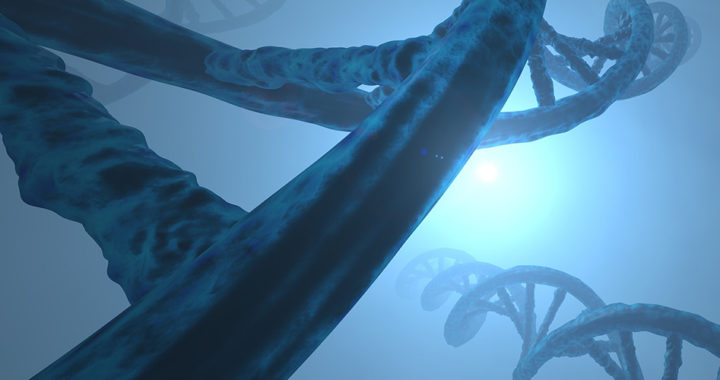Telomeres or telomere is a region of short DNA sequence located at the ends of eukaryotic chromosomes. Their roles center on maintaining the integrity of chromosomes and promoting genome stability during mitotic cell division.
The Specifics: What Are Telomeres?
American geneticist Hermann Joseph Muller was the first to note during the 1930s that the ends of the chromosome had distinctive characteristics. He named these ends as “telomeres” based on the Greek words “telo” and “mere” that respectively translate to “end” and “part” in English.
The classic experiment of Muller on Drosophila or fruit flies that involved exposure to X-ray to generate various mutations revealed that the ends of the chromosomes were resistant from the mutagenic effects of the radiation. Subsequent studies have uncovered the nature of these telomeres.
Accordingly, telomeres are both structures and regions found at each end of a chromosome that consist short and repetitive DNA sequence. In vertebrates, the sequence is TTAGGG with a complementary FNA strand of AATCCC. This sequence is repeated about 2500 times in humans.
The Three Major Roles of Telomeres
Subsequent studies have uncovered the functions or roles of telomeres. These roles collectively center on maintaining the integrity of chromosomes and promoting genome stability during mitotic cell division. They essentially provide protection against threats to the genome arising from the inherent problem in the asymmetric replication of DNA. Take note of the following:
1. Protect Chromosomes from Fusing with Neighboring Chromosomes
American cytogeneticist Barbara McClintock studied the effects of chromosome breakage using a strain of maize she constructed in the lab. Her findings were detailed in a paper published in 1941. One of such revealed that the broken ends of chromosomes were unstable, and these chromosomes fused with other chromosomes with broken ends at contact.
The same paper also mentioned that cells do not tolerate chromosomes with broken ends and the DNA repair mechanism quickly fuse these ends together with others neighboring chromosomes with damaged ends. Nevertheless, based on this observation, the paper concluded that telomeres prevent chromosomes from fusing with one another.
It is important to reiterate the fact that the chromosome contains the DNA of the nucleus of a cell. Hence, to understand further the role of telomeres in protecting chromosomes, think of them as the caps or plastic tips found at the opposite ends of a shoelace. These plastic tips keep a shoelace from unraveling or becoming frayed from both ends.
2. Allow Proper Replication of Chromosome During Cell Division
Cell division includes DNA replication. Note that this replication also includes chromosome replication. Every time a cell carries out this replication process, chromosomes are shortened by about 25 to 200 bases. This shortening is an inevitable consequence of mitotic cell division and the corresponding DNA replication.
However, because telomeres protect the ends of a chromosome, the overall genetic integrity is protected. The only parts of the chromosome that shortens are the telomeres because DNA replication enzymes cannot replicate the sequences present in these regions, thus leaving the DNA undamaged.
The absence of telomeres would mean that important DNA would be lost at each cell division. This would lead to damages transpiring at the genetic level with the loss of genes. Such is the reason why telomeres play an important role in successful cell division.
3. Facilitate Replicative Senescence and Anti-tumorigenesis
American anatomist Leonard Hayflick advanced the concept of limited cell division in 1961. He introduced the concept of Hayflick limit to explain the fact that each time a cell divides or undergoes mitosis, the telomeres found on the ends of each chromosome shortens slightly. Cell division ceases once telomeres reach a critically short length. This is called cell cycle arrest or replicative senescence.
The Hayflick limit provides one of the theories of the causes of aging. Take note that signs of aging become visible once most of the cells in tissues and organs reach replicative senescence. Although this mechanism seems counterproductive because it renders the body of an organism unable to generate new cells for repair and regenerative purposes, it is important to also take into consideration the role of replicative senescence as anti-tumorigenesis or in preventing the growth of tumors or cancerous cells.
Several studies have explored the natural role of telomeres in preventing cancer. A review study by John Maciejowski and Titia de Lange noted that telomere shortening exerts a tumor-suppressive effect. Another review study by Xioaxing Feng and David W. Koh mentioned that high levels of telomerase activity had been observed in cancer cells. Take note that this activity is required for telomere length maintenance and tumor growth. Most types of cancers typically exhibit dysfunctions in telomere shortening.
Nonetheless, because telomeres limit the number of times a cell can divide, it keeps uncontrolled cellular proliferation at bay.
FURTHER READINGS AND REFERENCES
- Feng, X. and Koh, D. W. 2013. “Roles of PARG in DNA Damage and Apoptosis.” International Review of Cell and Molecular Biology. 304: 227-281. DOI: 10.1016/B978-0-12-407696-9.00005-1
- Hayflick, L. and Moorhead, P. S. 1961. “The Serial Cultivation of Human Diploid Cell Strain.” Experimental Cell Research. 25(3): 585-621. DOI: 10.1016/0014-4827(61)90192-6
- Maciejowski, J. and De Lange, T. (2017). “Telomeres in Cancer: Tumor Suppression and Genome Instability.” Nature Reviews Molecular Cell Biology. 18: 175-186. DOI: 10.1038/nrm.2016.171
- McClintock, B. 1941. “The Stability of Broken Ends of Chromosomes in Zea Mays.” Genetics. 26(2): 234-282. PMCID: PMC1209127
- O’Connor, C. 2008. “Telomeres and Human Chromosomes.” Nature Education. 1(1): 166

